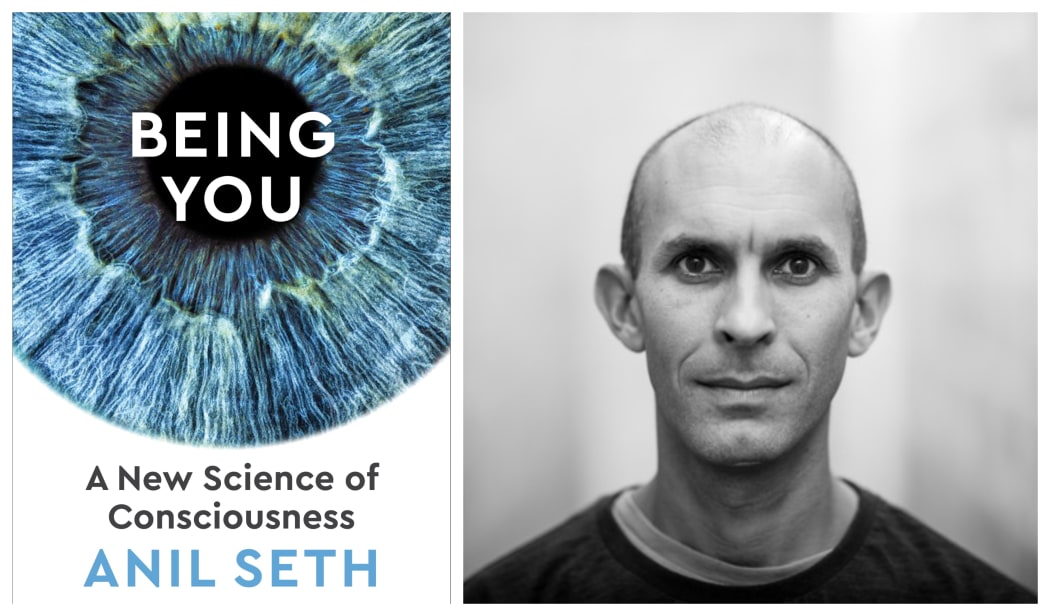How do we define our conscious reality? It’s an area of study professor Anil Seth has made his life’s work.
His new book Being You – A New Science of Consciousness challenges our understanding of perception and reality.
Seth is professor of cognitive and computational neuroscience at the University of Sussex.

Photo: Supplied
One of the oldest topics in philosophy is about the relationship between how things appear and how things really are, he tells Kathryn Ryan.
“For a long time, this has been the subject of philosophy, of physics to figure out what reality is really made of, is it quarks, is it super strings.
“But also neuroscience and psychology has a lot to say about this, and has for hundreds of years, how we relate sensory signals that come into our eyes, and our ears and our other senses, light waves that convey vision, and the pressure waves that come into our ears.
“What's the relationship between these sensory signals? And what's actually out there?”
Intuitively it is logical to think the brain makes sense of the world through the senses, he says.
“The brain simply reads out the world through the senses, as if the world just pours itself, seamlessly into the mind. And then there's this self, this essence of me, perched somewhere inside the skull that is the recipient of all this information, that's reading out the information.”
But there’s another way of looking at this, he says.
“There's actually quite a long history of thinking the other way, a combination of philosophy, neuroscience, that actually what we perceive is not a readout of the sensory information. It's the brain's guess, or best guess, about what's out there.
“And the sensory signals are just there mainly to calibrate our best guesses, to tell us when the brain is getting things wrong.”
In other words, we perceive things from the inside out, rather than from the outside in, he says.
He characterises this as a “controlled hallucination”.
“It's an internally generated experience that's reined in by what's out there. But it's not the same thing as what's out there.”
So, are these controlled hallucinations shared? He believes to an extent they are.
“I think there's a couple of things going on here. The first is we have similar experiences, in part because the world really exists.
“Again, it's this point that not everything is just made up inside the head, there is a real world out there. And so, if we're facing the same world, looking at the same car parked across the street, we're both likely to have very similar experiences, because there is really something there.
“And we all have quite similar brains, not just members of our own family, but members of our own species, we all have pretty much the same kind of brains, pretty much the same kind of senses.”
Nevertheless, there is a degree of perceptual diversity among us, he says. An experiment this year in the UK aims to get an understanding of how much our perceptions differ.
“We want to try and examine how people's perception works across hundreds of thousands of people, to map out for the first time, this inner diversity that's hidden, we're very used to thinking of external diversity, we all differ in height and skin colour and so on.
“But I think there's a sort of dark matter of inner diversity that we don't really know about, we only know about at the extremes of things like autism and synaesthesia. But there's a lot more going on under the hood. And we want to try and figure out what it's like.”
Human consciousness is one of the most compelling and seductive mysteries of life, he says.
“We can't escape it, it's a mystery precisely because we have conscious experiences.
In fact, the only thing that we can really be sure of is that we are conscious. And it's not this sort of abstract mystery about what the origin of the universe.
“We know what it's like to have a conscious experience, we know what it's like to have the feeling of doing something of our own freewill.”
He believes there is a “fundamental connection between conscious experience and our nature as living, breathing organisms.”
“There's been quite a prominent tradition in the sciences of thinking of the brain as some kind of computer and the body as just kind of messy biological robot that can move the brain computer from one meeting to another.
“But if you think about how brains evolved, what brains are fundamentally for, the first duty of the brain is to keep the body alive.
“And the mechanisms of prediction of making guesses about what's out there in the world apply equally to the interior of the body, the brain only knows about what's going on in the interior of the body because it gets sensory information from the body itself.”
This moves us away from the notion of human consciousness being about language or abstract though, he says.
“[It’s] something much more deeply embodied, the most fundamental basic conscious experiences we have, I think, the moods and emotions, feelings of pain, of suffering, of joy, of pleasure of disgust, of hunger of thirst.”

